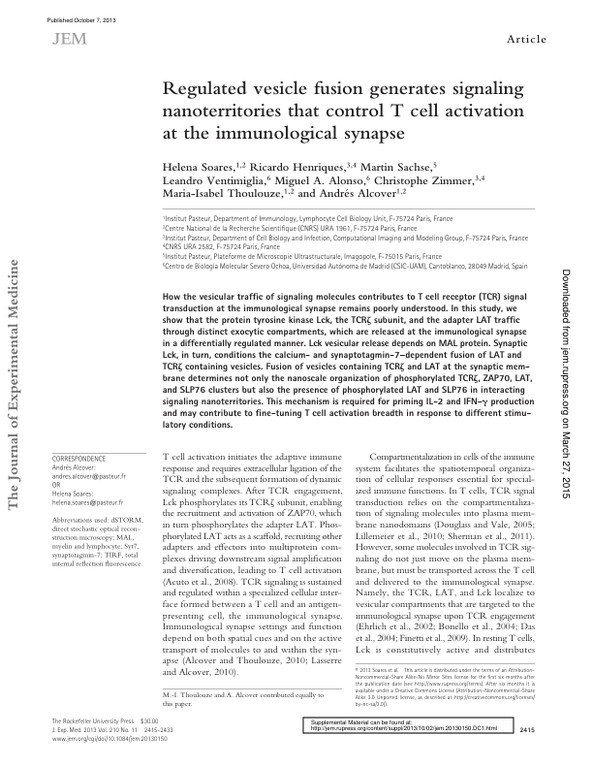Regulated vesicle fusion generates signaling nanoterritories that control T cell activation at the immunological synapse
Technologies: QuickPALM
Paper published in Journal of Experimental Medicine, January 2013
Publisher: The Rockefeller University Press

The manuscript by Soares et al. (2013) explores the role of regulated vesicle fusion in generating signaling nanoterritories that control T cell activation at the immunological synapse. The study reveals that Lck, LAT, and TCRβ traffic through distinct exocytic compartments, which are released at the immunological synapse in a differentially regulated manner. Lck vesicular release depends on the MAL protein, and synaptic Lck in turn conditions the calcium- and synaptotagmin-7–dependent fusion of LAT and TCR signaling subunit containing vesicles. This fusion event determines the nanoscale organization of phosphorylated TCR, ZAP70, LAT, and SLP76 clusters and the presence of phosphorylated LAT and SLP76 in interacting signaling nanoterritories. The findings are essential for priming IL-2 and IFN-γ production and may contribute to fine-tuning T cell activation breadth in response to different stimulatory conditions. The authors suggest that the vesicular traffic of signaling molecules to the immunological synapse is regulated by endosomal traffic regulators and their specific subcellular localization, and they propose the identification of Rab proteins and their effect.